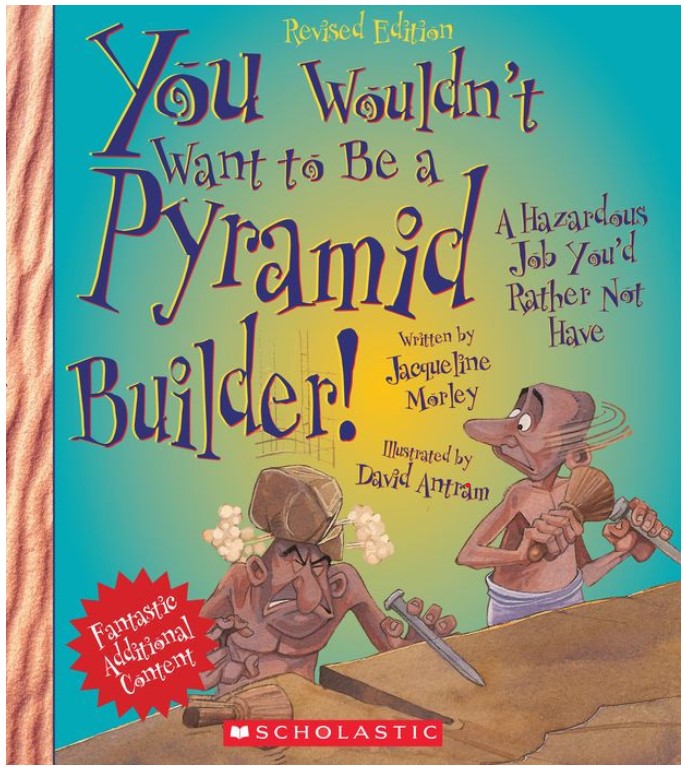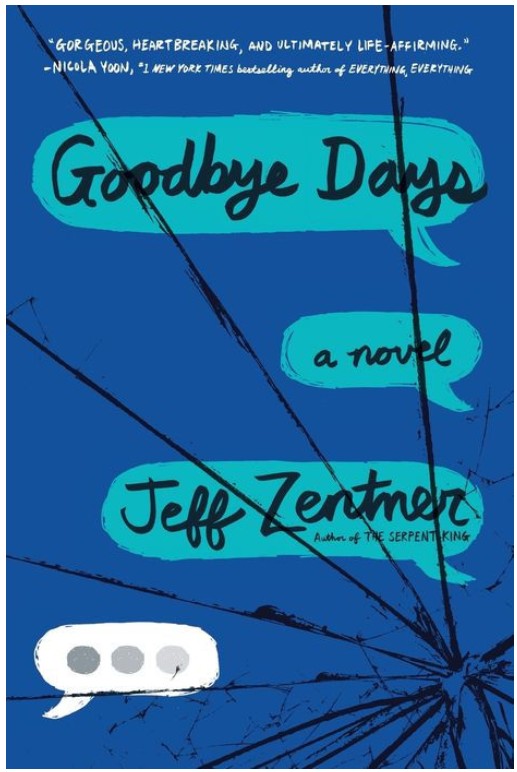
Buy This Book
“If you are drawing a scene don’t try to be inventive. No one will be pleased. More of the usual is what is wanted.” –You Wouldn’t Want to Be a Pyramid Builder!
You Wouldn’t Want to Be a Pyramid Builder!
by Jacqueline Morley
AR Test, Good for Reluctant Readers, Teaches About Culture
8+
Score
5.7
42
You are living in Egypt around 1500 BC. When a pharaoh dies, he joins the hawk-headed sun god Ra and travels the sky in his boat. To ensure his eternal life, the pharaoh’s corpse must not decay. So, each pharaoh gets his subjects to build him a gigantic tomb—a pyramid—which will preserve his body forever. Thousands of Egyptians are forced to work on it, including you.
You Wouldn’t Want to Be a Pyramid Builder! immerses the reader in the story, making the interactive book fun to read. Readers will learn about the difficult work required to build a pyramid fit for a pharaoh. Much of the work was completed by unskilled workers who mined in a granite quarry or cut stone with a very hard rock. Skilled carvers and painters were also necessary to complete the inside of the pyramid. While most of the book discusses pyramid building in detail, it also incorporates the Egyptians’ belief in many gods and how the gods were vital to everyday life.
Even though building a pyramid was serious work, the book uses humor to engage and educate readers. The text and full-color illustrations give accurate technical detail and give readers a vivid understanding of what life was like as an Egyptian pyramid builder. The book’s format is perfect for reluctant readers since each page has larger and several smaller illustrations. On each two-page spread, a large paragraph explains what is happening. Along the edges, more information about a pyramid builder’s life is given. For example, “On payday, your wages come in various useful forms, such as grain, oil, or fine linen cloth.
Anyone who wants to understand how the pyramids were made will find this easy-to-read book fascinating. The nonfiction book includes informative captions, a complete glossary, and an index. While some readers may not understand all of the words, context clues and illustrations will help them decode their meaning. Readers don’t have to watch for scorpions or crocodiles to learn more about ancient Egypt. Instead, they can head to the nearest library to check out Mummies and Pyramids by Mary Pope Osborne or The Curse of King Tut’s Mummy by Kathleen Weidner Zoehfeld.
Sexual Content
- None
Violence
- Tax collectors “always have ways of showing how wrong you are.” The illustration shows a man on the ground being beaten with a stick.
Drugs and Alcohol
- None
Language
- None
Supernatural
- When creating the decorations in a tomb, “It is very important to know the exact stance and gestures the figures should portray and what symbols and written spells should accompany them. . . If you get any of them wrong the decorations will lose their magic power of ensuring the pharaoh’s safe journey to the gods.”
- To keep evil spirits away, “place the god Bes in a shire set in the wall of one of your rooms. He protects homes.”
- Some days are considered unlucky, “when it is believed evil forces are particularly strong. . . On those days, it is best to avoid bathing, making a journey, killing an ox, a goat, or a duck. . . Illnesses are caused by evil spirits too, so doctors prescribe spells as well as medicine.”
- It is important to carry an amulet such as the eye of the Sun God, Ra.
Spiritual Content
- The Egyptians believed in many gods and that the pharaohs were gods. “The Egyptians think the gods look after them because their rulers, the pharaohs, are gods themselves. When a pharaoh dies he joins the hawk-headed sun god Ra and travels to the sky in his boat.”
- The Egyptians believed the gods controlled everything. “You must bring offerings of your best produce to the temples for them. . . when the crops fail or when the hot wind blows blinding sandstorms from the desert, the gods are angry.” An illustration gives an example that shows a man getting eaten by a crocodile.
- It is important to preserve a body because “if it decays your spirit will perish. In the case of a pharaoh, these arrangements are important because the well-being of Egypt relies on his union with the gods. . . The head embalmer wears the mask of Anubis, the god of the dead, and recites appropriate spells.”
- When a body is preserved, “lucky amulets are bound in wrappings and the mummy is completed by a face mask portraying the person within.”
- When burying a pharaoh, “sacred rites, performed by the temple priests daily, will keep his spirit alive forever.”
“If you are drawing a scene don’t try to be inventive. No one will be pleased. More of the usual is what is wanted.” –You Wouldn’t Want to Be a Pyramid Builder!
Latest Reviews

Driven

Goodbye Days

Blood of Troy

Will’s Race for Home

Animal Superstars: And More True Stories of Animal Talents

Temple of Secrets

Lifeboat 5

Rock ’n’ Goal

Dogku






